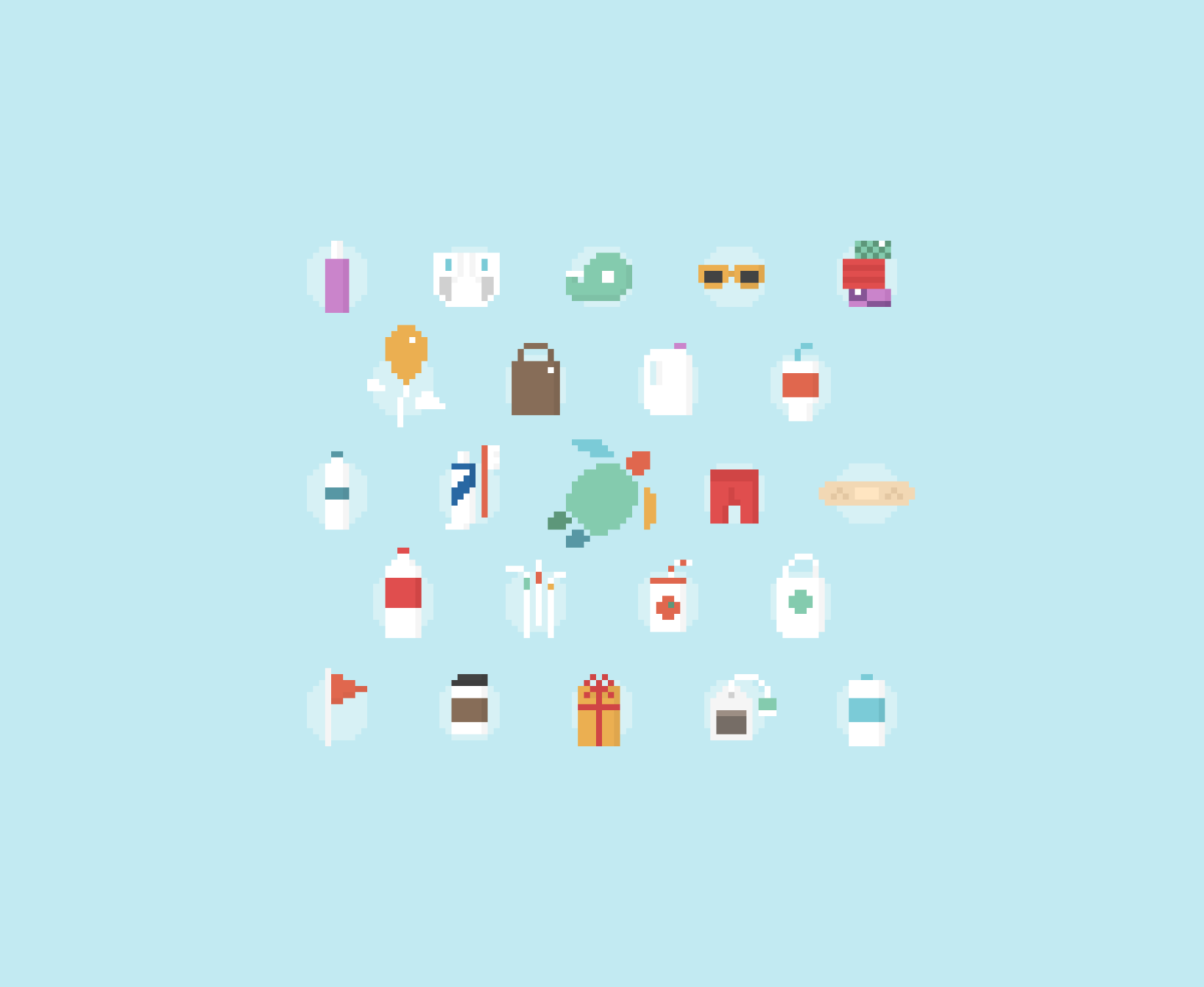Plastic Free July starts tomorrow (yes, tomorrow)!
As the eco-conscious summertime celebration rolls in, we thought we’d share what it means for us, as well as some do’s and don’ts to make it as successful as possible. It’s a great way to cut plastic out of your life, but there are some things to keep in mind as you look to go greener.
———–
DO: Skip plastic packaging and single-use plastics
Plastic Free July is all about cutting plastic from your life, and plastic packaging and single-use items should be first to go. Cutting either makes a huge dent in your plastic footprint, and thankfully, cutting either can be easier than you think. It will require quite a bit of effort to remove these plastics from your daily life, but in our increasingly green world, it’s definitely possible. Shop at local shops and markets where food is unencumbered by plastic wrap and use reusable silverware/straws instead of plastic cutlery.
DON’T: Skip prescriptions or other essentials
Speaking of possible, being entirely plastic-free is (sadly) not. We live in a plastic world, so while we can consciously remove most plastic from our lives, we can’t remove it all. Prescriptions and other medical supplies are often shipped in plastic to keep them sterile; water can be transported to impoverished areas and places in crisis thanks to water bottles; and by simply eating and drinking as we normally do, we consume an average of a credit card-worth of microplastics a year! So please, don’t skip your meds, your crisis supplies, or your meals in the name of Plastic Free July.
DO: Set smaller goals
Setting the goal of going plastic free for the month of July is a great goal, but it can become more achievable with smaller steps along the way. A wise woman (my mom) once said, “Little by little.” If you’re going to go a whole month without any kind of plastic – start small and work your way up. Take it one day/week at a time, or one plastic product at a time. Especially if this is your first time trying to do Plastic Free July, it can make the progress more apparent, instead of feeling like it’s Pass/Fail.
DON’T: Give up once you accidentally break your plastic-free streak
To build on the previous: Accidents happen. So, when you order that plastic-free cutlery set and it’s shipped in plastic (smh, we’ve been there) – don’t panic. You might not have gone the whole month, sure, but think about all of the plastic you HAVE prevented from going into a landfill. And if this is your first year doing Plastic Free July – at least you took the initiative to try it out! Compare your streak with your streak next year, or (even better): see how Plastic Free August goes (and September, October, etc.). Going plastic free, like any other environmental practice, doesn’t have to be ‘perfect or nothing’ – any amount of good is still good. You have to be proud of making that change.
DO: Recycle any plastic you happen to come across/accidentally buy
In the event of accidentally buying a plastic item or receiving plastic packaging, make sure to recycle it as you normally would when you are done with it. Recycling programs differ by area, so make sure to check with your local providers. Even if you don’t have curbside recycling bins, many programs have community bins where you can drop-off recyclables in a central location.
HOT TAKE: Thrifted, reusable items may be more eco-friendly than new, sustainable products – even if they are plastic (exceptions apply, read more for details)
To preface: we are talking about buying reusable plastic items (like Tupperware, toys, etc.), not single-use plastics. Single-use plastics are never the way to go – but no matter what you are in the reusable market for: only buy new if you need it new.
Thrifting is more than a cheap way to find decent items – it has an environmental purpose. Reusing items over and over and over again gives as much life to an item as it can bear before it becomes waste (and hopefully, repurposed or recycled). There are emissions and waste tied to the life of the item no matter what, but with more use, that cost goes further than it would otherwise. This applies to sustainably made products, but it also applies to harmful manufacturing. Having a sustainable product is ideal, but using goods that are already made and don’t create any more carbon emissions are even better.
Preventing unnecessary emissions is just part of it, but so too is preventing waste. In a scenario where you are deciding between buying used Tupperware and new bioplastic storage containers – the bioplastic still has to be manufactured, while the used item already exists. As a society, we can’t make a night and day shift to sustainable goods – we would have a waste crisis on our hands! Plastic is not the future, but by putting the items we already have in use, we can more sustainably make the move to sustainable goods.
———–
What are your goals for Plastic Free July? What’s the easiest plastic item you think you can go without? We love hearing about people who celebrate Plastic Free July and what they do to cut down on single-use plastics!
